I love making stuff. The films I get involved with always seem to result in fun builds. It’s possible I’m getting my priorities backwards.
Old Book

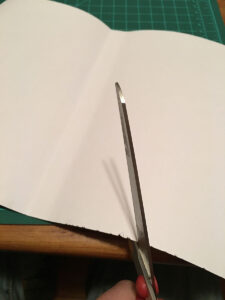
Board Game
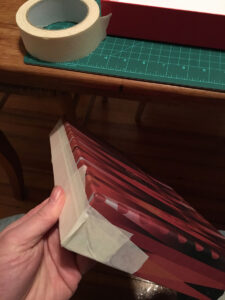
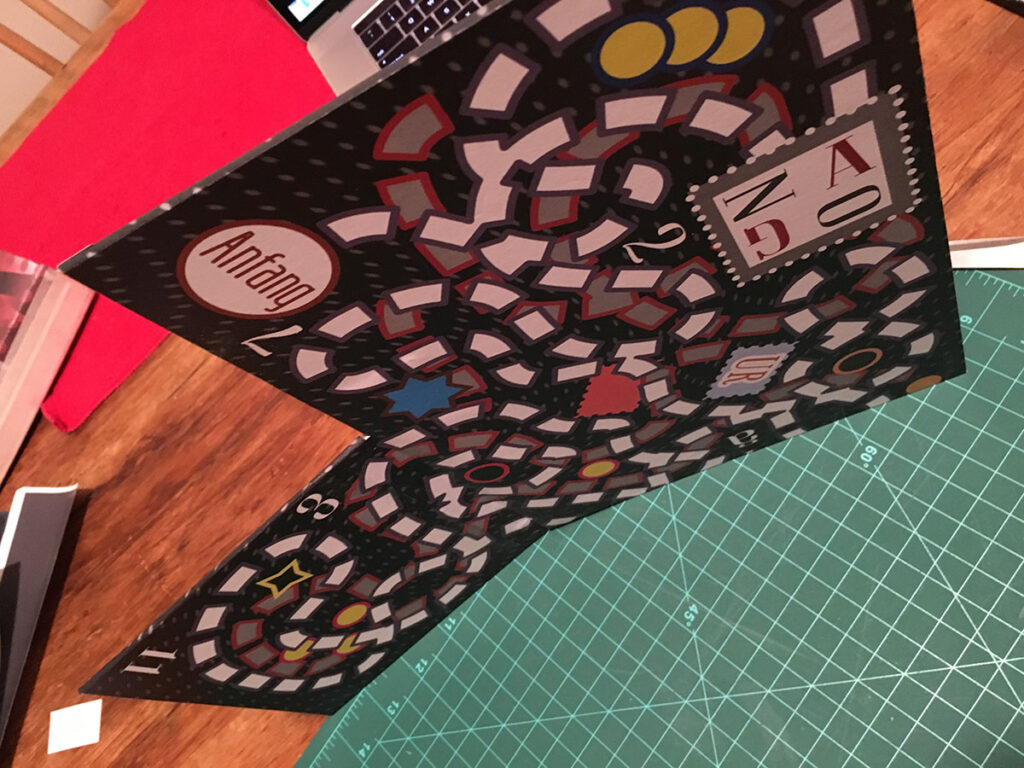
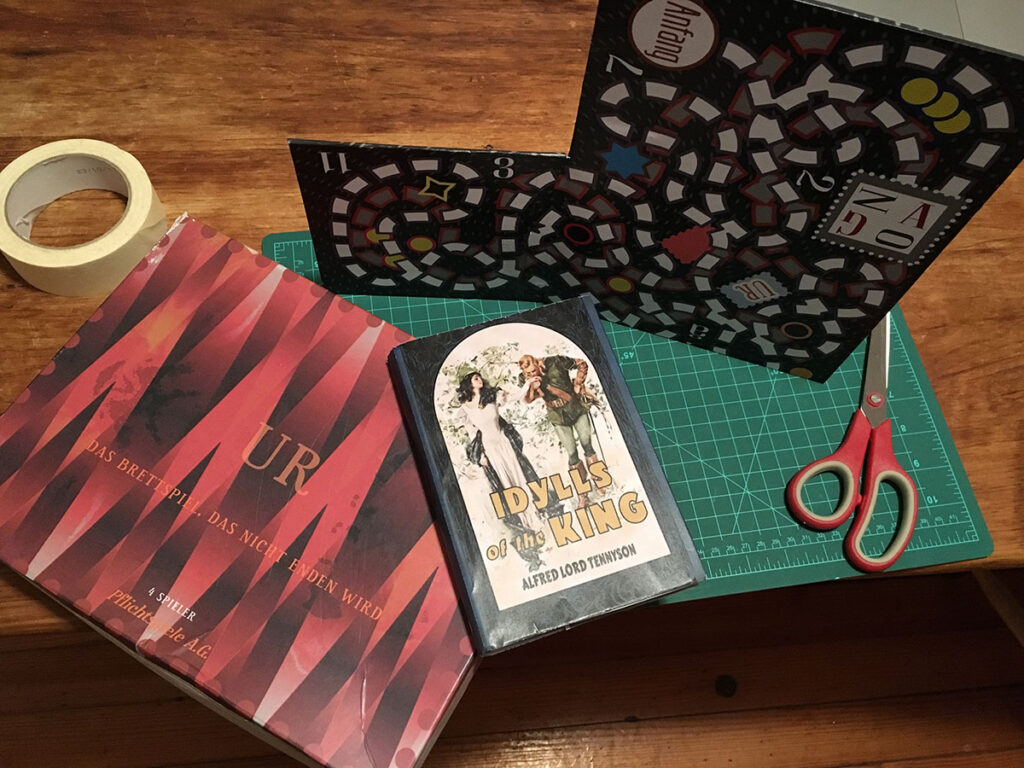
Rain & Sun Shirts
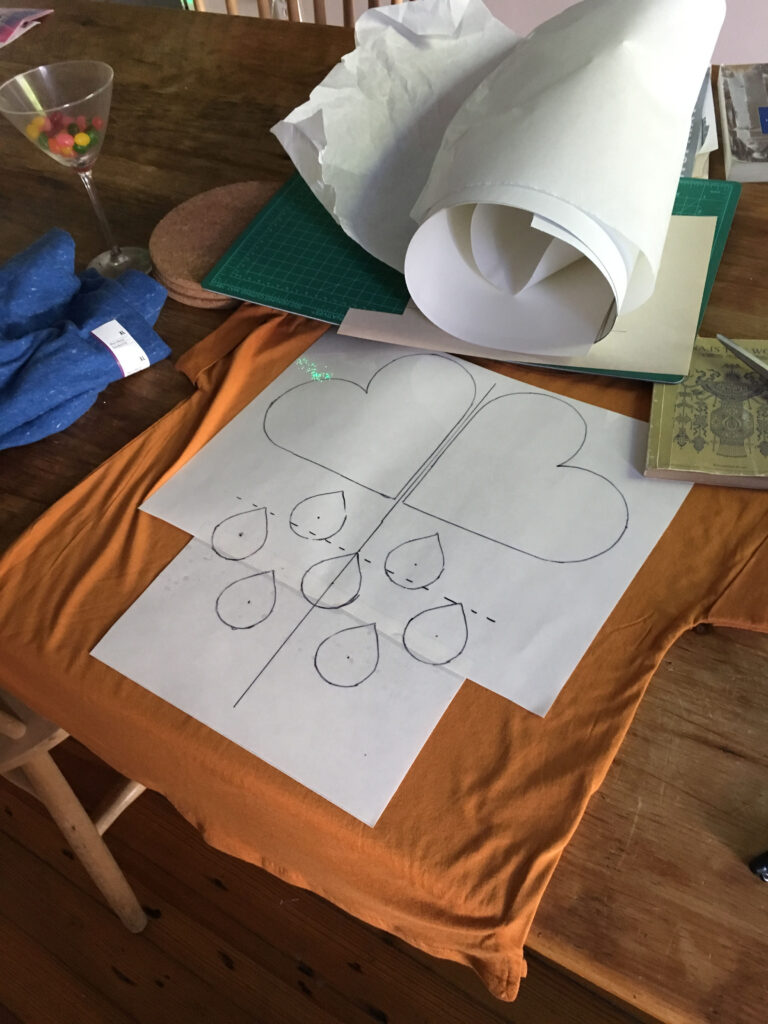
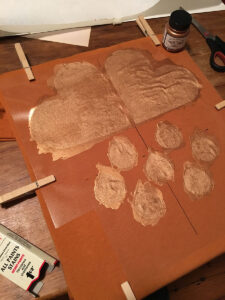
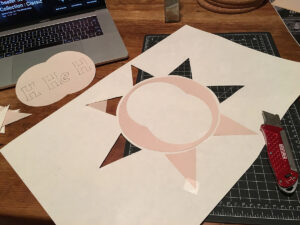
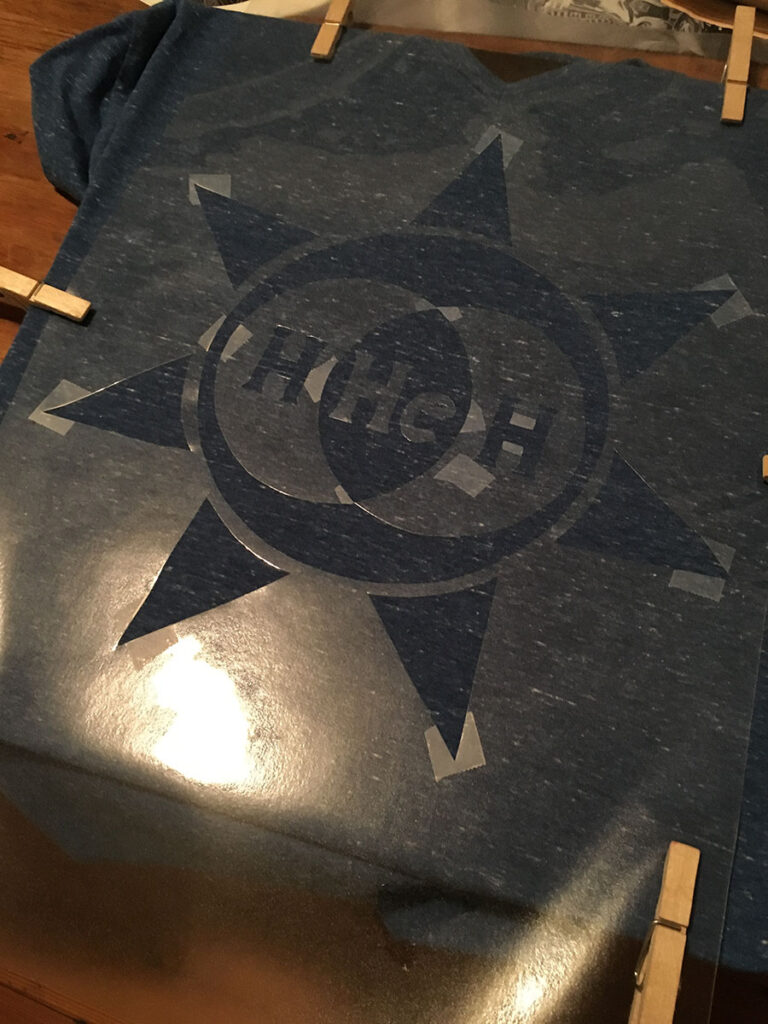
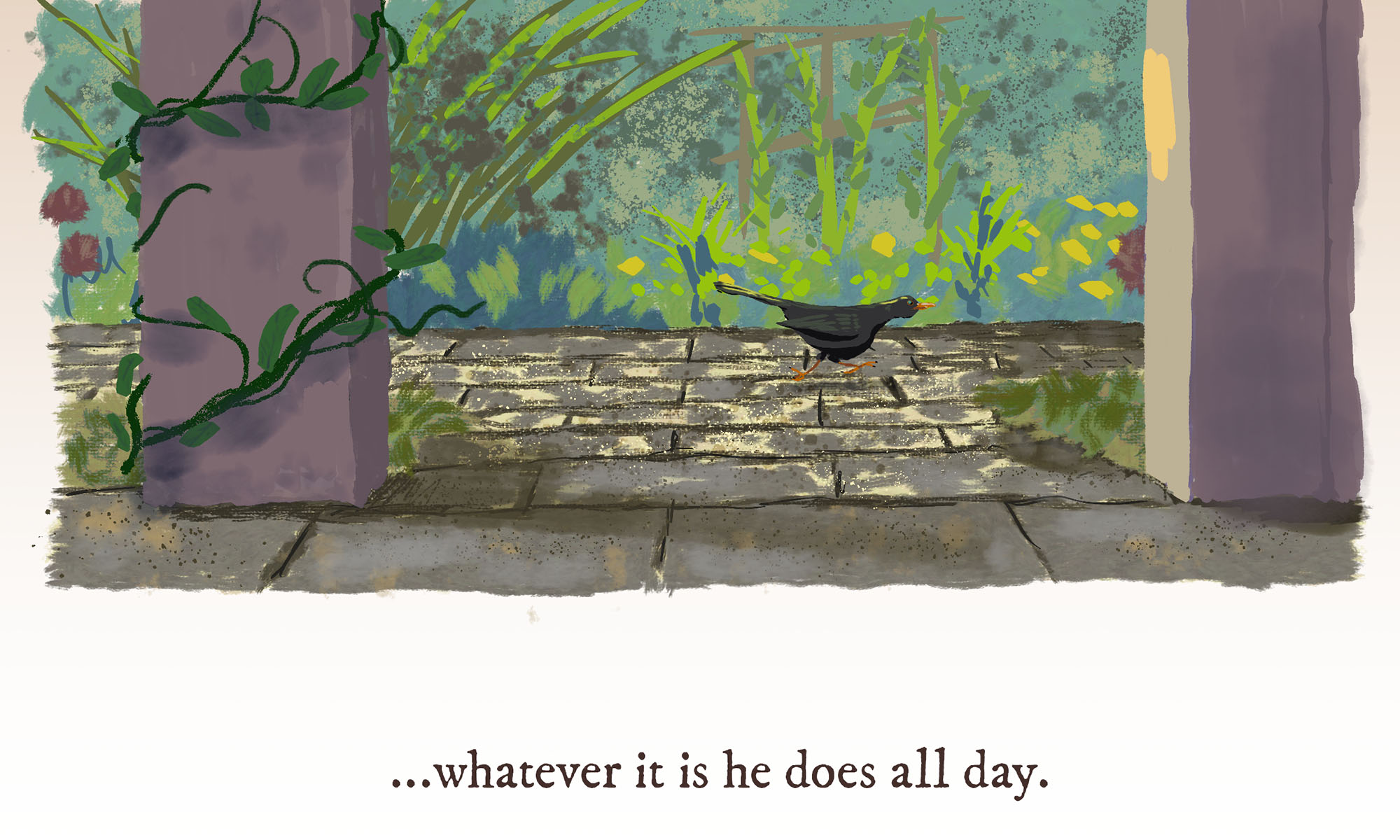
Cinematic/tech artist & filmmaker. Online since 1999.
I love making stuff. The films I get involved with always seem to result in fun builds. It’s possible I’m getting my priorities backwards.









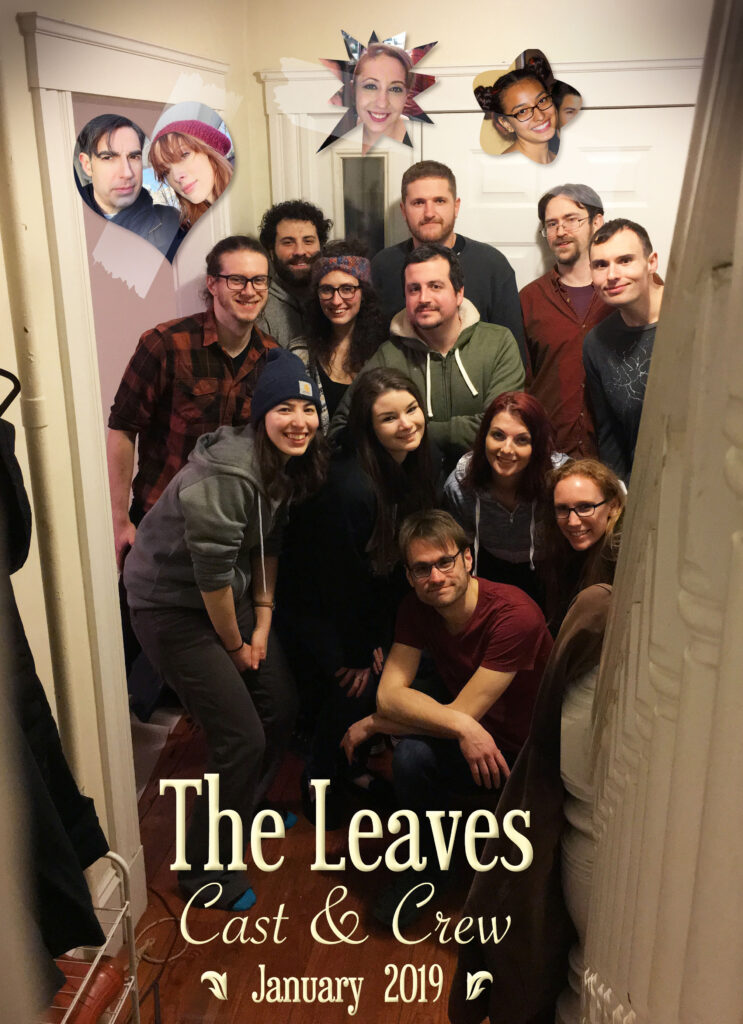
A printable PDF of all nine stories in Sax Rohmer’s 1920 occult detective series, The Dream Detective:
iPhone port of the classic SegaCD RPG. Still a wonderfully fun game.
Here’s an (unofficial) soundtrack album for the 2017 Netflix series “Dark,” for iTunes downloading:
The above is based substantially on Cinema Lumina’s streaming Apple Music playlist, with Marcin Tomaszewski’s Spotify playlist, and the sleuths on Tunefind.
Play time is a satisfying 1 hour 2 minutes, and the total cost a less-so $16.86. If you’d like to save a few bucks, I’d recommend omitting the just-barely-a-song “Cow Song,” the unintentionally creepy postwar German hit “Es wird ja alles wieder gut,” and ’80s crap “The Look of Love” and “I Ran.” (Nostalgia? I was there, Gandalf! In the 1980s. I was there when the strength of men failed…)
Besides the (unavailable) score itself, there are some omissions. On the out-of-place counterpoint song front, I prefer the Flock of Seagulls song to “You Spin Me Round (Like a Record)” by Dead of Alive [iTunes $1.29] simply because it’s less annoying (and lacks even the freaky faux-sincerity of ABC). It also appears only briefly as music heard by characters, in continuity. Likewise “Irgendwie, Irgendwo, Irgendwann” by Nena [iTunes $1.29], old standby “Shout” by Tears for Fears [iTunes $1.29] and the two barely-heard generic metal tracks, “Rücklauf” by Marathonmann [iTunes $1.29] and “Pleasure to Kill” by Kreator [iTunes $1.29]. Roomful of Teeth’s odd experimental vocal track tends to fade into the general noise ambiance of the show’s sound mix, but the track is “Partita: III. Courante” [iTunes $0.99]. Likewise Ben Frost’s pleasant but forgettable “Snow” [iTunes $1.29]. Finally, there’s a Mimi Page track supposedly called “Nightfall,” but I haven’t been able to locate it.
The House of Time, a scale model of earth history, public beta v0.3 is now live. While it’s still pretty empty, this is the first release where I feel the important pieces are all in place (if only as stubs).

The House of Time, a scale model of earth history, is now in public beta v0.2.
In a short while, the link to the venerable Bestiary of Geekdom up top will move to the sidebar, and be replaced with the House of Time.
This is a project I’ve been tapping away at for six months or so, on and off, and in an effort to play a little less of my usual gin rummy, I’m working toward soft-launching a public beta. It will be missing a lot of features and content, but should be a good start.
The 3d engine is built in Javascript on the Babylon.js WebGL framework. My goal is for it to run in all modern browsers–including mobile–with low-to-modest hardware requirements. There will be no loading screens, HUD or narration, no accounts or other tracking, no objectives or “gamification,” and certainly no ads. The House of Time will be free and available to all. If you’re old enough to remember the experience of Myst when it first came out, you’ll understand the quiet, contemplative, even lonely atmosphere I wish to create. Art as science as art. This is in furtherance of my personal philosophy that education should be free.
I’ve been designing a system that uses as little bandwidth as possible. Most interactive 3d is built around the expectations of PCs and consoles: That transfer is fast, storage is large, and the GPU is the bottleneck. Here that’s reversed. There will be zero texture maps. Shaders will supply most of the visual detail procedurally, generating it on the fly in your graphics card. SVGs will be rendered to bitmap in a hidden canvas element to supply more specific 2d imagery. Most of the shaders will rely on world space coordinates, so that two instanced models sitting side by side may look radically different. Instanced geometry will be used as much as possible. Complex extruded shapes will be generated in the browser from a path and cross-section. Chunks of geometry will load only when needed, and free their memory when no longer in use.
The overall scene (more than a mile long) is being built in Blender, as it plays well with Babylon.js and glTF export. Even with the UI improvements in the Bforartists fork, this has been a major pain point, and creation of complex 3d assets (dinos!) lags badly. (My preferred 3d package, Hash Animation:Master, has sadly become a paid zombie, with no meaningful updates this decade. The quest for a replacement continues…) I split the large scene into chunks manually and export them for browser loading with Babylon.js’s Blender export plugin. Tags in the names of models and lights are digested by the engine on load, to do things like assigning noise shaders, creating extruded shapes, or replacing a mesh with sprites.
This week, I’ve built a new stageManager object to move scenery on- and offstage and in and out of memory, as well as written a new pine foliage shader I’m reasonably happy with. Before going public, I still need to create and fix a few more things:
Membership/Info Card – Footstep sounds – Titanosaur – Low-res Ionic Pediment – Evergreens – Brick Walkways – Tree Ferns – Cambrian Marker – Beach – Stars
StageManager – New evergreen shader – Sound manager
Crash on deleting assetContainer – Falling sprites not finding ground – Sprite systems not reusing correctly – Too much fog at start – Left-hand side of gate not animating – Miocene grass too short – Cretaceous Hall light wonkiness – No Carboniferous shadows
You visit a page and find a punched metal gate, with an arrowhead design on one half and an Apollo capsule on the other. It slides open. You realize this is a 3d scene, like a game, and you can move about with familiar keyboard, mouse and touch controls.
The fog rolls back to reveal a paved driveway leading to a museum-like facad ahead. The outlines of animals line the walk. Strange animals
You hear your footstep as you pass through the thin gate, stepping over a drain and past some grassy planters. You cross the turnaround circle and mount the steps.
Inside, sunlight streams through a modernist glass domed roof, falling on stone sculptures of dinosaurs. Titanosaur towers over you. Beneath your feet, a plexiglass floor shows creatures from the sea. On you pass into an older-looking part of the museum. More creatures: Allosourus, stegosaurs. Forward into a gothic section, with still more creatures: plainer somehow, more crocodile-like. You pass outside again through a charred portal, burned to its hinges.
Outside, sailback lizard sculptures bask in the sun of a palatial back veranda. You descend the steps into a stand of pines and ferns. The path continues. Lonely, rough-hewn sculptures in rusted metal mourn a world they once ruled. Soon there’s nothing but a thick carpet of trilobite fossils, crunching beneath your feet. A plain marker declares even their end.
There is nothing but the scrub, the path, the sun. Occasional stone columns pass to either side.
Half an eternity later, the sun begins to set. As you pass over a small rise, the moon disappears. Below is a rocky beach leading to an endless sea. You descend as the stars come out and stand at the dark surf, watching the stars above and below.
This is the House of Time, a scale model of Earth history. Each step you’ve taken represents a million years.
“Into every life a little rain must fall. For some this is a blessing, for some a curse, and for some it may be both in disguise. Meet Rama Rodriguez–account number 2425133, 4.2 stars, no accidents. A storm chaser in a late-model Honda Accord. But what is a surge when the surge never ends? For Mr. Rodriguez’s next pickup is flagged on an unmarked back road of an unnumbered census designation between Old Hither and Yon Terrace… in The Twilight Zone.”
“Say hello to Mr. Robert Patton, undertaking the most dangerous act that mankind has yet devised: stepping out of his front door. Because somewhere out in that angle of short memoried softwood and lost soccer balls lurks something not native to the crisscrossed streets of man’s housing-developed world. Something lean, and hungry. A creature wholly unknown to Mr. Patton’s cozy world, but attested to in numerous travelogues… from The Twilight Zone.”
“It’s a lonely vigil being the last knight and defender of the esoteric, even if only the corner-of-the-pub variety. Take a barstool next to your new old friend Matthew Blazek, topic expert. Tip one back and learn a thing or two, for it’s last call, and you may soon need both a stiff drink and a bit of advice–because this public house, along with you and its other occupants, are about to be transported to a time and a place that can’t be. A misremembering by the universe. An anachronism wrapped in a mystery, shunned to a quiet corner… of The Twilight Zone.”
“These two outlined, highlighted, tired eyes belong to Ms. Naomi Cabrera. Following the press of a button they’ve just slid off an instrument panel familiar to many of us: a brass oracle that’s long since taken the place of a man or woman in a hat, who once guided us up into the belly of a steel-boned, stone-clad, concrete beast. Did departed Romans pay their ferryman for his boat, or for safe escort? When the tower is alone, and angry, what revenge does it take on those tiny homunculi that circulate within? Naomi is about to learn, because she’s just pressed the wrong floor; a number between numbers, with a broken light; home to empty suites, the drone of air conditioners, and a small import/export concern with one other office… in The Twilight Zone.”
“Measure, tick the grease pencil and rack focus on one Eric Cheung. A man of his time, once conjured by two thin threads applied with a bit of spirit gum and a ‘comic’ accent. But the comedy masks, real and false, are not on the propman’s call list today. Our man’s sides specify a location well beyond the comfortable sets and Kino daylight; past the disused facades of once popular genres; past even the empty business offices of 90 year old hack writers and producers too cold to even meet with death in this town; through a parking lot, over an arroyo; somewhere in memory’s tall grass between the Ventura Freeway… and The Twilight Zone.”
“You’ve rolled past him on moving sidewalks at every wheel and spoke; half-watched as a dozen stewardesses poured him a thousand tiny drinks; maneuvered a bag between him and endless racks of tchotchkes that somehow serve only to make their emblazoned airport feel less like a definable location. Risk an extra minute in your boarding group, squint into the sunbeam, and you may just make out the tall form of Shlomo Harnas–citizen of the world, native to nowhere. Neither super spy nor wandering jew, just another mug trying to catch a codeshare to a little-trafficked field coded ‘H-O-M-E,’ with a connecting flight… through The Twilight Zone.”
“The Watchfire” is a deep time science fiction screenplay that plays as symbolist fantasy/horror, in the mode of Jack Vance’s Dying Earth, or films like Evolution, Innocence, and Sauna. Two 10-year-old girls guard a flaming beacon alone on a hill by the sea. One day a third child appears.
Concept art on the blog here.
At barely six pages, “The Watchfire” can be filmed on a modest budget with a small crew. This is a breakdown of how.
Three young actors are needed. The two “sisters” (the Dawn Girl and the Dusk Girl, age 10-12) will need matching long blonde wigs, and simple handmade-looking dresses matching their hair. One will need to memorize two long-ish blocks of text–to be recited as stories, not performed as lines–the other only one recital. They should be rehearsed together in the weeks prior to filming, with a focus on being comfortable and engaged with one other. The third (the Golden Boy, 10-12) will need a simple handmade “castaway” outfit of canvas and rope. He should be rehearsed separately. The childrens’ parents/guardians will need to sign off on some violence in the film, though very little that’s apparent to the actors on set. I won’t pretend to be an expert on directing children, but per Lenore DeKoven it’s best if the children are minded on set by someone other than a parent; children tend to have trouble focusing with a parent present. (Think home vs. school.) Limitations on shooting hours will have to be researched and planned for.
Filming will take place over a weekend. As I’m currently based in Boston, coastal Maine will be the most accessible shooting location, although northern California (near my sister) or the Swedish coast (near Denmark) would also work. The requirement is a temperate wooded area where the hills meet the sea. Shooting in Maine would allow me to save on accommodations by using the visitors’ apartment at my mother’s house. (Two of the kids even get bunk beds!)
Three filming locations will be needed:
The primary shooting location will need to be built in situ beforehand. It consists of a central object (the beacon) resembling a dead tree turned to stone, with eternal flames playing across its branches. Beside it sit two small pools of indeterminate depth. A ring of stones surrounds the beacon. The surrounding tall grass is trampled into a crop circle about 40 feet in diameter, with a second ring of stones marking its outer boundary.
A property owner’s back field would be ideal. The house can be quite close by, as long as it’s out of the shot. (A friendly house is also helpful for costume changes, bathroom breaks, emergency battery charges, craft services, etc.) Sync sound would be needed on this set, so proximity to a busy road is a no-go.
The beacon itself will be only partially built, to a height about a foot taller than the actors. The upper branches and flames will be created digitally in post-production. Practical lights will be hung from booms atop the beacon, to be covered over with CGI. Although the sisters enter and exit the pools in story, this can be largely faked with staging and cutting. Mylar sheets under a few inches of water may work to simulate much deeper pools. (The bottoms are never seen.) Tutorials for creating a crop circle with planks and ropes are easy to find online.
For the effects work, a chrome ball must be filmed with bracketed exposures at each setup on the beacon set, to generate an Image Based Lighting model. Instances where the actors move in front of the CGI tree elements will have to be hand rotoscoped.
A couple of brief scenes take place just outside the beacon’s crop circle. They’ll almost certainly need to be filmed elsewhere. No build. Sync sound won’t be needed. The scenes can probably be shot guerilla style near a public lookout.
The effects work here is largely subtractive: Removing any trace of civilization from the background. Towns, ships, square fields, vapor trails, roads, etc. will need to be painted out in a tracked travel matte. Elements the actors pass in front of will have to be rotoscoped out.
A single, relatively brief scene. No build. No sync sound.
The trick here is that Maine’s inshore waters are littered with brightly-colored lobster buoys. The best option may be to film near high tide in a cove with extensive mudflats. (Traps are set below the intertidal zone; the farther out the low tide line, the smaller and more distant the buoys, making them easier to paint out.)
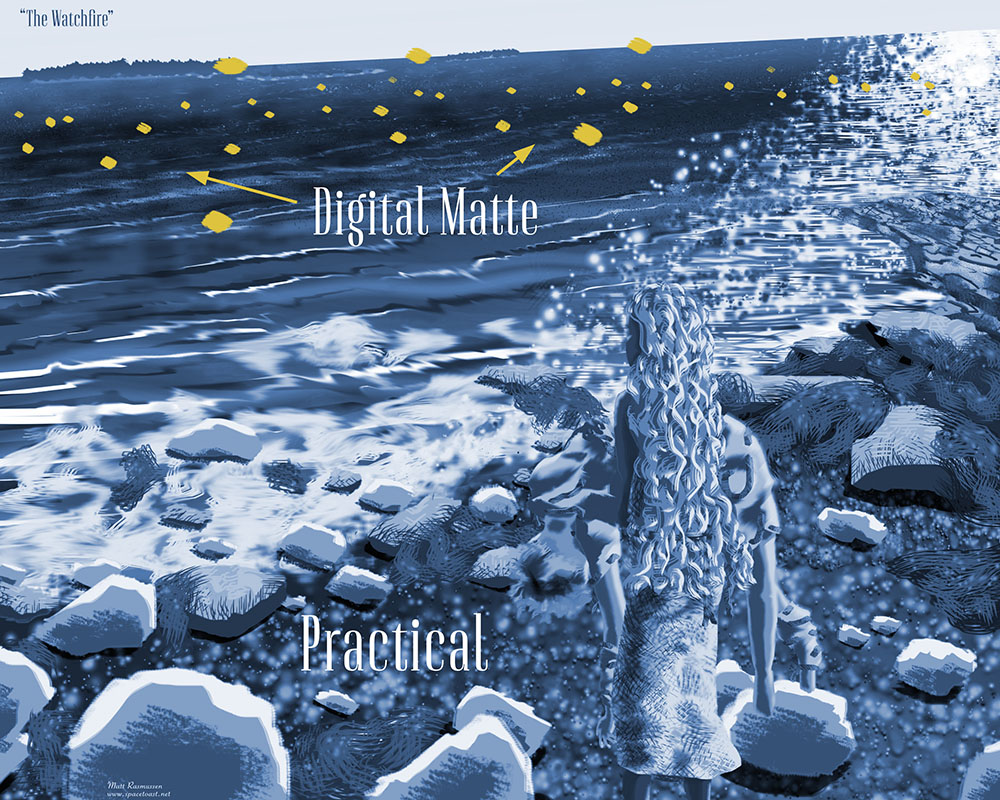
Establishing shots will present the same civilization problems. These will tend to be fairly static, and can be constructed as matte collages.
Special effects will be done by me in Fusion, which was our primary tool on “The Garden, 1910.” Unless I can secure some kind of residency, they’re likely to take a couple months to complete on evenings and weekend.
The project can be accomplished in about 3-4 months, start to finish.
Required personnel:
One of the germs of “The Watchfire” was a partial mishearing of Quicksilver Messenger Service’s 1971 song “Fire Brothers.” The mondegreen method seems about right, as no one can seem to agree on the exact lyrics to this song. Here’s my best attempt:
In the valley where the loons and lovers play
Lived two children who were born on Saturday
One was dark, one was fair
Fathered by the hawk, mothered by the mareStranger children you will never see;
Brothers of the forest and the sea
One was land, one was air
And they keptthetwo fires burning thereIn a golden vessel and silver vase
Kept them burning in that strange enchanted place
Kept them burning to the sky
For they knew someday the sun would die
Edit: After blasting this on real speakers, I think Steve’s right. Thanks, fire brother!
Her bare feet linger just within a crop circle bounded with a ring of stones. A second ring of stones lies closer to the center. In the middle, flanked by two small mirrored pools, looms the BEACON itself–taller than her, topped with a flame that isn’t fire.
A lone BEACON of light shines from the wooded hills above a shore untouched by man.
The DAWN GIRL (10) looks down from the hill, wringing her hands as the GLOW of the explosion below touches her face. She is fair with extremely long blonde hair, draped in a shapeless garment of the same color.
Dusk carries the body to the sea’s edge. She’s about to drop it into the tidal mud when, brow knitting, she leans in. A faint, regular CHIRP-like sound eminates from the golden boy’s mouth, like a ticking counter.
At some point well into my lifetime, C.S. Lewis’s Narnia books were re-numbered into a sort of faux-story-chonology order. My own 1987 Scholastic trade box set numbers them correctly–in the order they were written–but modern editions (including my Gyldendal library-bound Danish editions) adopt the new order.
As we learned with the Star Wars movies, there’s no such thing as a “prequel” to an already released story. There can be sequels that take place earlier, but the structure of reveal, suspense and surprise–that is, storytelling–can’t be reorganized once it’s fixed. Watch the long, suspenseful introduction of Darth Vader at the beginning of Star Wars [*sigh* Episode IV: A New Hope] again. Silence. Sudden violence. Billowing smoke. Then the music… It’s a masterclass in villain reveals. Can one really believe that explaining and humanizing this character beforehand would enhance the scene? I feel bad for any kid who watches the Star Wars movies for the first time in “episode” order.
With the Narnia books there’s something more insidious: The implication that children can’t understand a flashback. Yes, as both explain quite clearly, The Horse and His Boy and The Magician’s Nephew take place before the events of The Silver Chair. Lewis himself took a bright view of children’s comprehension abilities. He was writing for 9-11 year olds, but even much younger children get “because this happened earlier.” They understand out of order storytelling, because that’s how humans communicate. All stories are flashbacks. In The Lion, the Witch and the Wardrobe, the moment of sublime wonder created by the lit lamppost in the snowy forest is in no way enhanced by knowing that, in the Creation era of this world, a villain briefly made it into our world, caused some trouble, tore off a piece of lamppost, lost it in Archean!Narnia, and because the Narnia Inflationary Field was still in play, it grew into a sort of natural lamppost tree thing. It’s a fun moment, when it comes, but that’s because we get to go back into our memory and connect something in an unexpected and fun way, not because we were confused and frustrated by it.
The modern Narnia book order is a mess, but there are alternatives. Below, I’ve attempted to compile is the most definitive list to date of Narnia series orderings.
1. The Magician’s Nephew
2. The Lion, the Witch and the Wardrobe
3. The Horse and His Boy
4. Prince Caspian
5. The Voyage of the Dawn Treader
6. The Silver Chair
7. The Last Battle
1. The Magician’s Nephew
2. The Lion, the Witch and the Wardrobe
~ 2.5. The Horse and His Boy (The Horse and His Boy takes place during The Lion, the Witch and the Wardrobe)
3. Prince Caspian
4. The Voyage of the Dawn Treader
5. The Silver Chair
6. The Last Battle
1. The Silver Chair
2. The Horse and His Boy
3. The Voyage of the Dawn Treader
4. Prince Caspian
5. The Lion, the Witch and the Wardrobe
6. The Last Battle
7. The Magician’s Nephew
1. The Last Battle (God what a slog…)
2. The Silver Chair (Only kind of a slog)
3. The Magician’s Nephew (Plenty of cool stuff for your time, at least)
2. The Horse and His Boy (Moves right along, but mostly you’re still fagged out from The Silver Chair)
4. The Voyage of the Dawn Treader (Moar!)
4. Prince Caspian
5. The Lion, the Witch and the Wardrobe (That was it?)
1. The Voyage of the Dawn Treader (WTF’s up with the lamb?)
2. The Last Battle (Wait, desert demon Tash of the MusselCalormen is real?)
3. Prince Caspian (“You must learn to know me by another name-” “Baphomet?” “No you stupid prig.”)
4. The Magician’s Nephew (Yeah yeah, wizards are all horrible…)
5. The Silver Chair (Stung by a serpent, blah blah…)
6. The Horse and His Boy (Same as the lashes of your servant, that’s fine.)
7. The Lion, the Witch and the Wardrobe
1. Prince Caspian
2. The Voyage of the Dawn Treader
3. The Silver Chair
4. The Horse and His Boy
5. The Magician’s Nephew
6. The Last Battle
7. The Lion, the Witch and the Wardrobe (My mom found the missing book from my box set at a library book sale when I was in college!)
1. Troldmandens Nevø (Yes, the Danish word for magician is “troll man.”)
2. Løven, Heksen og Garderodeskabet (The definite article is usually a suffix in Danish.)
3. Hesten og Drengen (Shouldn’t it be Hesten og hans Dreng?)
4. Prins Caspian (Free square!)
5. Morgenvandrerens Rejse (Now that is an impressive Germanic compound.)
6. Sølvstolen (Sounds a bit like a French person saving “seulv-.”)
7. Det Sidste Slag (At least the Danes admit it’s a slag.)
1. Løven, Heksen og Garderodeskabet (Saxo.com)
1. Prins Caspian (Saxo.com)
1. Morgenvandrerens Rejse (Saxo. The bank’s computer froze my credit card.)
2. Sølvstolen (Copenhagen bookshop)
2. Hesten og Drengen (The same Copenhagen bookshop)
3. Det Sidste Slag (I looked all over the damn city for this one.)
4. Troldmandens Nevø (Didn’t find it until I was studying in Ringkøbing this year.)
1. The Voyage of the Dawn Treader (What adventure!)
2. Prince Caspian (What mystery!)
3. The Magician’s Nephew (What magic!)
4. The Horse and His Boy (What a yarn!)
5. The Lion, the Witch and the Wardrobe (What a children’s book!)
6. The Silver Chair (What… grayness)
7. The Last Battle (What a slog)
1. The Lion, the Witch and the Wardrobe
2. Prince Caspian
3. The Voyage of the Dawn Treader
4. The Silver Chair
5. The Horse and His Boy
6. The Magician’s Nephew
7. The Last Battle
1. The Lion, the Witch and the Wardrobe
2. Prince Caspian
3. The Voyage of the Dawn Treader
4. The Silver Chair
5. The Horse and His Boy
6. The Magician’s Nephew
7. The Last Battle
Amazon should control the oceans off all local communities. They can replace local beaches and save taxpayers lots of money, while enhancing the value of their stock.
There was a time seasides offered the local community lots of services in exchange for their tax money. They would bring sun, sea, and sand to the masses. Residents could visit any time they wanted, swim, and enjoy an ice cream.
They also provided residents with a comfortable place they could enjoy nature. They provided people with a place they could swim in peace with the oversight of friendly lifeguards. Oceans served as a place where residents could hold their outdoor events, but this was a function they shared with parks. There’s no shortage of places to hold outdoor events. Also, the parks should be privatized.
The sea slowly began to service the local community more. Seas served up fish, and allowed the free movement of goods. The modern ocean still provides these services, but they don’t have the same value they used to. The reasons why are obvious.
One such reason is the rise of “third places” such as private pools. They provide residents with a comfortable place to swim, sunbathe, meet their friends and associates, and enjoy a great picnic. This is why some people have started using their towel card more than they use their National Parks card. (I realize that “some people” means literally nothing, but work with me here. Also, the National Parks should be privatized.)
On top of this, streaming services such as Netflix and Amazon Prime have replaced the need to go outside. They provide nature content to the masses at an affordable rate. Actual natural places, like Martin’s Beach in California, have all but disappeared.
Then there’s the rise of plastic technology. Plastic has turned seashells into collector’s items, effectively eliminating the need for beachcombing.
Of course, there’s Amazon Shore to consider. Amazon has created their own online ocean that has made it easy for the masses to access both physical and digital artefacts of the world’s seas. Amazon Shore is a chain of stores that does what Amazon originally intended to do; replace the local. It improves on the beach model by adding salt water and ice cream. Amazon Shore basically combines a shoreline with an ice cream stand.
At the core, Amazon has provided something better than a local ocean without the tax fees. This is why Amazon should replace local beaches. The move would save taxpayers money and enhance the stockholder value of Amazon all in one fell swoop.
Above all, if the wobbly rhetoric and (nearly) fifth grade writing level of this piece haven’t convinced you, take comfort in knowing that it’s still marginally less stupid than this since-deleted Forbes piece.
Currently, our challenge with The Garden, 1910 is finding film festivals willing to program a 30 minute “short” film–never mind one with extensive (non-sexual) nudity. Private screenings both in the US and Denmark have been extremely positive, but we’re not exactly teabagging the zeitgeist.
Our challenge in making it was one of bringing across a big-budget 1910s fantasy film on a 2010s microbudget. As the production designer and cinematographer, I wanted to know what it was like sitting in a smoky cinematograph watching a new, hand-colored print of a film like ours.
We came up with some terminology: The illusion vs. the effect. The effect was how we would actually achieve the shot: greenscreened footage of actors, puppets and miniatures (filmed on an iPhone 6s with Filmic Pro) composited in Blackmagic Fusion, Final Cut Pro X and Motion, with additional elements from still images, Animation:Master and Photoshop. The illusion was how our magician-turned-filmmaker would have created the shot using period techniques: sets with sometimes elaborate stage mechanisms, multiple photographic exposures, splices, color-tints, pyro, forced perspective, piano wire, Pepper’s ghost, and so forth.
The subconscious effect of frame rate, and how variable frame rates can be used artistically, is something I’ve been exploring. The Garden, 1910 actually runs at 60fps; a blurred three-blade shutter fades each frame in and out, running the “film” at the slightly unsteady 17-19fps of a hand-cranked projector. As the camera would also have been hand-cranked (at a slightly lower 13-14fps for a better exposure) each frame of the fully-composited footage also has a slightly randomized gain adjustment, to simulate variability in exposure. (Filmic Pro will record footage at an arbitrary frame rate like 14fps, but from working with the footage my impression is that the iPhone hardware itself will only capture at certain fixed frame rates, and Filmic merely discards the unwanted frames.)
Obviously, we weren’t content to slap an “olde timey film” filter onto the composited footage and call it good. Each composite in Fusion was piped through a battery of patches to extract and then imperfectly add back in false color, to simulate hand-coloring. (This was a nightmare, but probably an instructive one. I’ll drill down into it, with some downloadable material for Fusion tinkerers, in an upcoming blog post.) The completed “film” frames from each sequence (one frame per frame) were edited in Final Cut, with glue splices added as a custom FCP transition from Motion. (Don’t look down on Motion; it’s a real Swiss army knife, and incredibly fast.) The footage then made a round trip to Fusion, where it received unsteady re-timing to 17-19fps, shutter flicker, gate jumping, vignetting, emulsion dust and scratches, exiting as 60fps finished footage–and making a round-round-trip to Final Cut for final editing.